
The saxophone is a type of single-reed woodwind instrument with a conical body, usually made of brass. As with all single-reed instruments, sound is produced when a reed on a mouthpiece vibrates to produce a sound wave inside the instrument's body. The pitch is controlled by opening and closing holes in the body to change the effective length of the tube. The holes are closed by leather pads attached to keys operated by the player. Saxophones are made in various sizes and are almost always treated as transposing instruments. Saxophone players are called saxophonists.

Vaudeville is a theatrical genre of variety entertainment born in France at the end of the 19th century. A vaudeville was originally a comedy without psychological or moral intentions, based on a comical situation: a dramatic composition or light poetry, mixed with songs or ballets. It became popular in the United States and Canada from the early 1880s until the early 1930s, but the idea of vaudeville's theatre changed radically from its French antecedent.
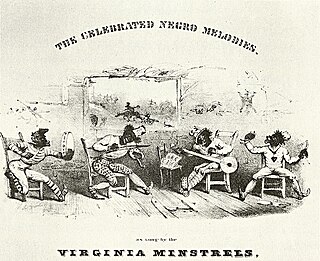
The minstrel show, also called minstrelsy, was an American form of racist entertainment developed in the early 19th century. Each show consisted of comic skits, variety acts, dancing, and music performances that depicted people specifically of African descent. The shows were performed by mostly white people in make-up or blackface for the purpose of playing the role of black people. There were also some African-American performers and black-only minstrel groups that formed and toured. Minstrel shows lampooned black people as dim-witted, lazy, buffoonish, superstitious, and happy-go-lucky.

Ida Cox was an American singer and vaudeville performer, best known for her blues performances and recordings. She was billed as "The Uncrowned Queen of the Blues".

The Soft Parade is the fourth studio album by American rock band the Doors, released on July 18, 1969, by Elektra Records. Most of the album was recorded following a grueling tour during which the band was left with little time to compose new material. Producer Paul A. Rothchild recommended a total departure from the Doors' first three albums: develop a fuller sound by incorporating brass and string arrangements provided by Paul Harris. Lead singer Jim Morrison, who was dealing with personal issues and focusing more on his poetry, was less involved in the songwriting process, leaving guitarist Robby Krieger to increase his own creative output.

The bass saxophone is one of the largest members of the saxophone family—larger than the more commonly encountered baritone saxophone. The modern bass saxophone is a transposing instrument pitched in B♭, an octave below the tenor saxophone. The bass saxophone is not a commonly used instrument, but it is heard on some 1920s jazz recordings; in free jazz; in saxophone choirs; and occasionally in concert bands.
Lewis Burr Anderson was an American actor and musician. He is widely known by TV fans as the third and final actor to portray Clarabell the Clown on Howdy Doody between 1954 and 1960. He famously spoke Clarabell's only line on the show's final episode in 1960, with a tear visible in his right eye, "Goodbye, kids." Anderson is also widely known by jazz music fans as a prolific jazz arranger, big band leader, and alto saxophonist. Anderson also played the clarinet.

Hokum is a particular song type of American blues music—a humorous song which uses extended analogies or euphemistic terms to make sexual innuendos. This trope goes back to early blues recordings and is used from time to time in modern American blues and blues rock.

Winnie Lightner was an American stage and motion picture actress. Perhaps best known as the man-hungry Mabel in Gold Diggers of Broadway (1929), Lightner was often typecast as a wise-cracking gold-digger and was known for her talents as a comedian and singer. She is also noted for introducing the song "Singin' in the Bathtub" in the 1929 motion picture The Show of Shows.

"I'm Just Wild About Harry" is a song written in 1921 with lyrics by Noble Sissle and music by Eubie Blake for the Broadway show Shuffle Along.
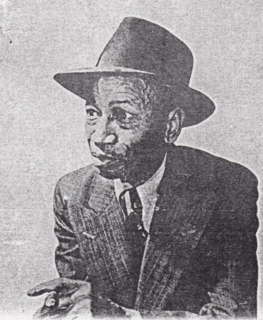
Perry Bradford was an American composer, songwriter, and vaudeville performer. His most notable songs included "Crazy Blues," "That Thing Called Love," and "You Can't Keep A Good Man Down."

"Darktown Strutters' Ball" is a popular song by Shelton Brooks, published in 1917. The song has been recorded many times and is considered a popular and jazz standard. There are many variations of the title, including "At the Darktown Strutters' Ball", "The Darktown Strutters' Ball", and just "Strutters' Ball".
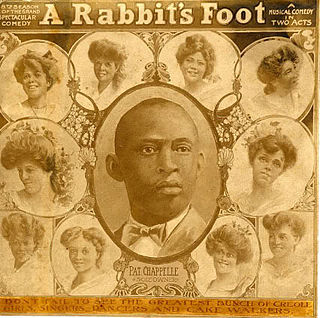
Black Vaudeville was based on performances that came out of the movement and style of African Americans. The vaudeville years were the early 1880s until the early 1930s. These acts were unique on the vaudeville scene because the performers brought in different experience that the white performers could not convey. Although African-American performers were mistreated, a Vaudeville gig was better than being a maid or farm worker. Vaudeville had what they called circuits to keep the show business at the time organized. It was difficult for a black performer to be accepted into the white circuit due to the racial issues of the time. Eventually, black circuits were created to give black performers more opportunities. Black Vaudeville made it possible for African Americans to enjoy entertainment through their own heritage.
Derek Nash is a British jazz saxophonist, band leader and recording engineer.
Tom McIntosh (1840–1904) was an African-American comedian who starred in many colored minstrel shows in the US from the 1870s to the 1900s. He was considered one of the funniest performers in this genre.

Eccentric dance is a style of dance performance in which the moves are unconventional and individualistic. It developed as a genre in the United States in the late 19th and early 20th centuries as a result of the influence of African and exotic dancers on the traditional styles of clog and tap dancing. Instead of holding the body stiff and straight in the style of a jig, acrobatics such as flips and contortions were used in a more exuberant, expressive and idiosyncratic way.
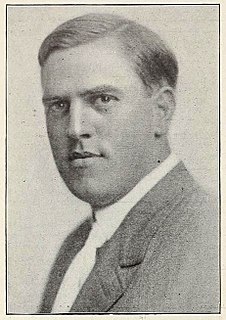
Harry A. Yerkes was a marimba player, inventor, and recording manager who assembled many recording sessions in the early years of jazz. Many of the sessions organized by Yerkes used his name for the artist credit, including Yerkes' Jazarimba Orchestra and Yerkes' Marimbaphone Band on Columbia Records, which are estimated to have some of the best selling records of 1919 and 1921.
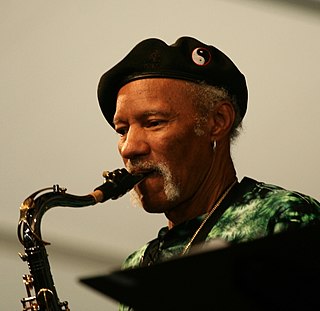
Charles Neville was an American R&B and jazz musician best known as part of The Neville Brothers. Known onstage as "Charlie the horn man", his saxophone playing helped earn the group a Grammy Award for best pop instrumental performance.
William King was an African-American vaudeville comedian and showman, who was described as "a living link between the Harlem Renaissance and nineteenth-century black minstrelsy."

The Governor General's Foot Guards Band is an authorized Canadian Forces 35-piece brass and reed band. It consists of serving members of the CAF who parade on a part-time basis. It serves as the regimental band of the Governor General's Foot Guards (GGFG) and is the most senior band of the Canadian Army Primary Reserve.














